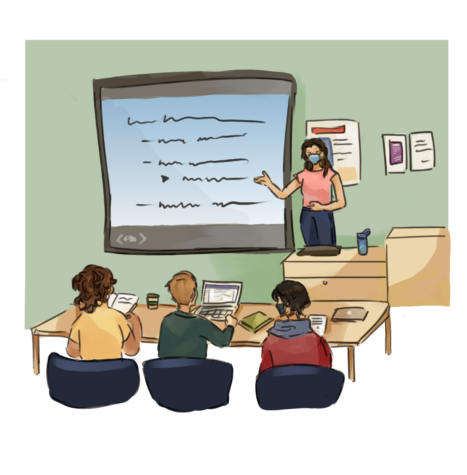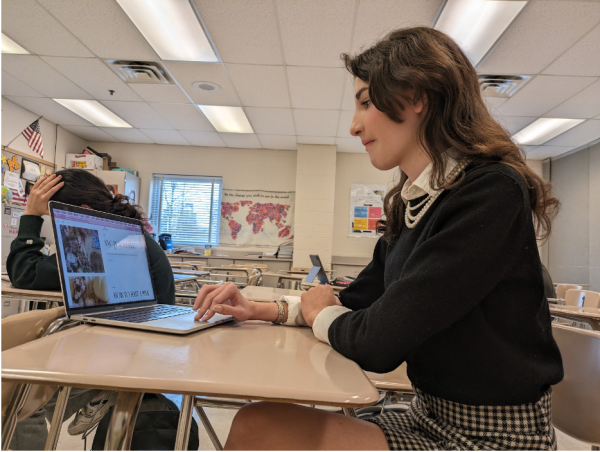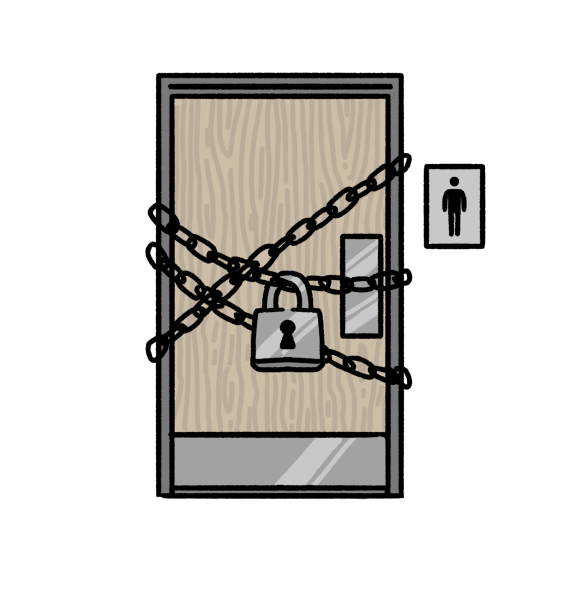The Growing Crisis and Lack of Action on the Southern Border
The crisis at the border is rapidly growing as facilities are being overpacked and families are still being kept apart
April 14, 2021
Thousands of unaccompanied minors are fleeing Mexico to seek asylum in the U.S., further exacerbating the pre-existing chaos at the southern border. Recent pictures released by the media revealed children at a Texas overcrowded border facility being packed together in plastic pods and sleeping on thin mats wrapped in mylar blankets to keep them warm at night. According to border patrol, the recommended capacity at this facility is 250 people during the pandemic and currently, there are over 4,000 migrants being detained, meaning this facility is way over the limit.
There are several contributing factors to the influx at the border. Gang violence poses a threat to the lives of the migrants and they must seek safety in another country. In Honduras, where violence has plagued the streets for years, criminals coerce civilians into paying a “war tax” for their survival, and those who cannot afford the tax are killed. Two hurricanes that occurred last November in Central America caused massive destruction and the evacuation and displacement of thousands of people. In addition, immigration rates tend to fluctuate around springtime as the temperature increases.
The Biden administration has blatantly declared their approach at the border will be humanitarian and disparate to that of the previous administration. Although Title 42, a Trump administration order that expelled all migrants seeking asylum to Mexico without a hearing, is still in place for families and adults as a public health measure to prevent overcrowding at U.S. facilities amidst the pandemic, it has been rescinded for children. This means children are allowed into the country.
The Central Americans Minors program has also been recommenced after it was abruptly stopped by the Trump administration, permitting children to be taken into custody by a parent or immediate relative who is a legal citizen. The reboot of this program aroused the attention of many families and parents because now they were able to reunite with their children in the U.S. or send them North to cross the border and be released into the country.
The Biden administration is facing bipartisan backlash over the border situation. Democratic politicians are condemning the extension of detention facilities and the continued implementation of Trump-era rules determined to prevent the spread of the coronavirus from immigrants. There is also pressure on Biden to reunite the families who were separated at the border during the Trump administration faster. Republican politicians are berating the administration for welcoming back asylum seekers and in a statement made several weeks ago, Trump warned that “illegal immigrants from every corner of the earth will descend upon our border and never be returned.”
The dangerous journey migrants must face on their journey to the border does not prevent many from taking the risk.
“It’s probably one of the hardest decisions that they will ever make. Those parents are literally choosing possible death sometimes,” senior Angela Orantes said. “They’re choosing their children’s future and the betterment of their own future in exchange for everything. They have lived back there but they aren’t as good, they’re not living, they’re surviving back in those countries.”
Orantes is a first-generation citizen. Her parents moved from El Salvador in the 2000s to provide a better future for her older brother.
“Most of my dad’s side of the family is here, all of my mom’s side is over there. Recently my aunt-because there’s a lot of gang violence down south in Central America-tried immigrating but she realized it was much harder especially amid the climate present a few years back under the Trump administration,” Orantes said. “She considered it as one of her options with her family, but they ultimately decided to immigrate to Germany because the process was much easier and less risky.”
60% of migrants reported experiencing violence traveling through Mexico. The migrant route is riddled with cartels and local criminal groups, and migrants are prone to sexual assault, kidnapping, and murder. People crossing the Rio Grande are at the mercy of the unpredictable currents and deep waters. A 9-year-old girl drowned recently while trying to cross the Rio Grande into Texas with her family.
The journey to the United States differs for every migrant. Some are forced to trek through Darién Gap, located at Colombia’s border with Panama and one of the world’s most dangerous jungles. The Columbian side of the jungle is controlled by one of the most powerful cartel groups, and no one escapes the Panamanian side without being robbed.
Children unaccompanied by parents are being placed under Covid-19 quarantine for 10 days and then shuttled to shelters around the country. At the Texas facility, more than 2,000 migrants spend an average of 133 hours waiting, past the legal limit of 72 hours. Many migrants are turned away by U.S. authorities due to Title 42.
“It’s unfair that the immigrants of Hispanic and Latino descent who are just wanting to work here are getting criminalized and are facing terrible prejudice,” Orantes said. “People may judge them but they should have some sympathy and empathy because they are uprooting their entire lives just to make them a little bit better.”













